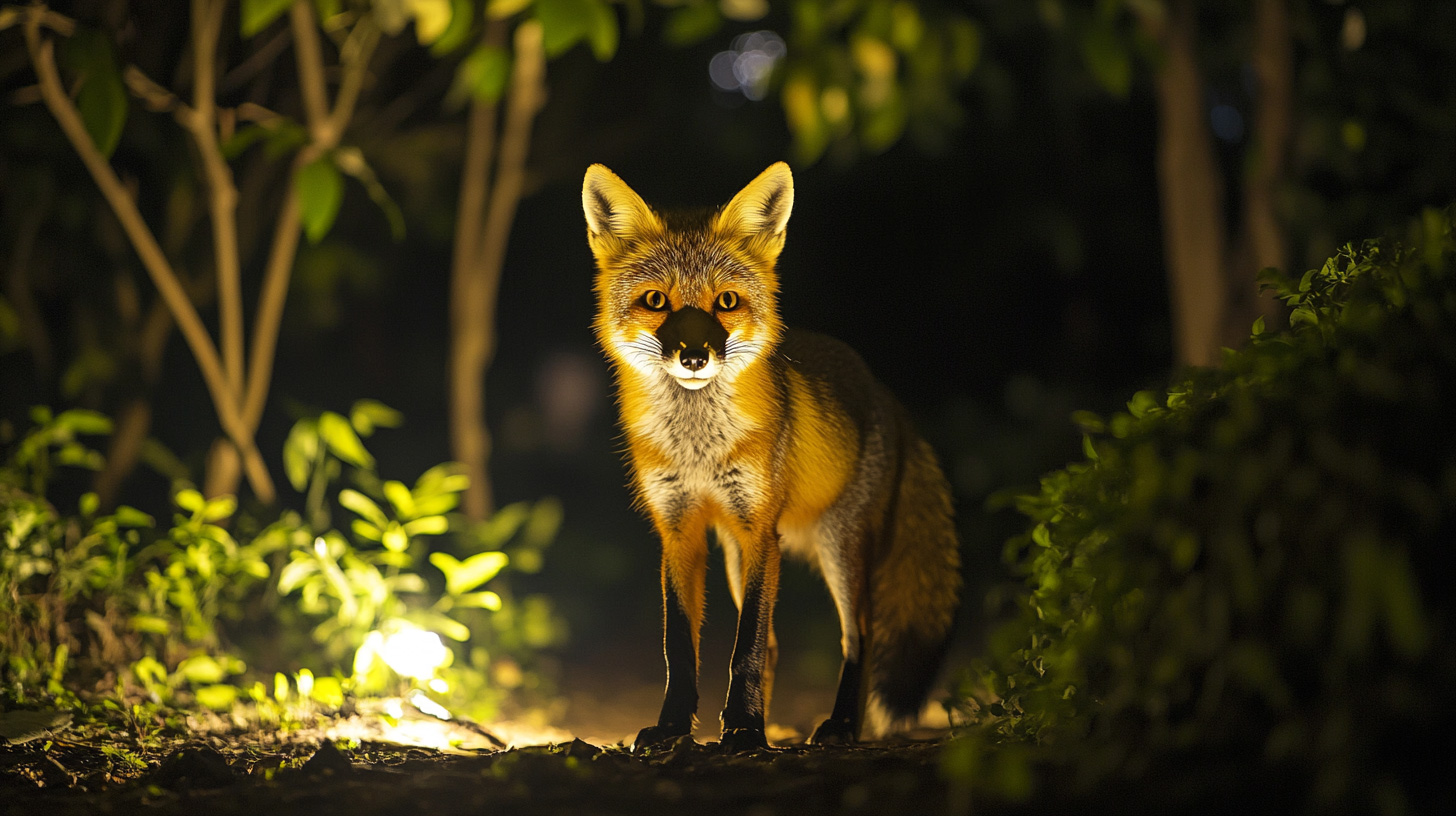City streets have long been the domain of bustling humans and the ever-busy traffic. Yet, when night falls, and the bustle calms, a different populace emerges to roam the urban jungle. Urban foxes, with their distinctive red coats and curious nature, take center stage in moonlit city safaris. This nocturnal life offers a glimpse into the secret lives of these city dwellers, revealing their adaptability, feeding habits, and challenges.
The Resilience of Urban Foxes
Urban foxes, primarily the red fox (Vulpes vulpes), have remarkably adapted to city life. These cunning creatures have learned to navigate the intricate web of human habitation with astuteness. By capitalizing on the abundance of food sources, ranging from discarded human food to small rodents and birds, foxes thrive in metropolitan areas just as well as in the countryside.
In many ways, urban sprawl has been a boon to fox populations. While rural foxes might face scarcity in winter months, their urban cousins feast on an array of leftovers from human households and businesses. Whether it’s raiit’s trash bins or scouting for food left out by well-meaning residents, urban foxes have developed a flexible diet that ensures survival.
Nighttime Undertakings: Urban Fox Activities
After sundown, while the city hums with the low melodies of distant cars and the occasional late-night revelers, foxes begin their nightly sojourn. Traversing through alleyways, parks, and even busy streets with caution and curiosity, urban foxes are active hunters and foragers. They exhibit various behaviors, including scavenging, hunting, and investigating human artifacts.
Watching these animals in their nocturnal expeditions can be both exhilarating and enlightening. In areas less frequented by humans at night, such as parks and industrial zones, fox families often establish their dens. The sight of playful cubs learning to navigate their environment under the watchful eyes of their parents is a testament to their family-oriented social structure.
Adaptation and Behavioral Strategies
One of the fascinating aspects of urban foxes is their behavioral adaptability. Unlike their rural counterparts, urban foxes may develop a certain boldness around humans as they acclimate to city sounds and activity. Urban foxes remain keenly aware of their surroundings, often utilizing stealth and speed to avoid danger.
Strategically, foxes are expert navigators. They frequently cross roads during early hours when traffic is minimal and use built environments to their advantage—scaling fences, navigating rooftops, and leveraging urban landscaping to conceal their activities. Understanding these behaviors can offer significant insights into foxes’ broader ecological role in urban settings.
Challenges and Hazards
Despite their apparent success, urban foxes face numerous challenges. Traffic poses a significant threat, with many foxes falling victim to vehicles annually. Additionally, green spaces—vital for foraging and denning—dwindle as urban areas expand, leading to potential resource shortages.
Human-wildlife conflict is another pressing issue. Some residents may perceive foxes as pests, leading to attempts at control or eradication. Misinformation about these animals exacerbates fear and engenders hostility. It’s vital to approach these challenges with education and coexistence strategies rather than eradicating methods that disrupt the urban ecosystem.
Ethical Considerations and Coexistence
Promoting coexistence with urban foxes requires understanding and respect. Ethical considerations should guide interactions between humans and these animals. Simple measures, such as securely sealing trash bins and refraining from leaving pet food outside, can reduce unwanted encounters.
Public awareness campaigns and local wildlife organizations often spearhead initiatives to educate city dwellers about living alongside foxes. These efforts aim to foster a harmonious relationship between urban residents and their wild neighbors by emphasizing their ecological benefits, such as rodent control, and dispelling myths.
Urban Foxes in Different Cities: Unique Case Studies
Cities worldwide host urban fox populations, each presenting unique adaptation case studies. In London, for example, foxes are so prevalent that they’re an integral part of the city’s cities. Research indicates that London’sLondon’sulation remains relatively stable due to public acceptance and strategic urban planning.
Conversely, urban foxes are less common in cities like Tokyo, but their presence is increasingly noted. Cultural perspectives on wildlife and urban density influence how foxes integrate into city life. Each city offers a lens into how foxes adapt, survive, and sometimes flourish within human constructs.
The Future of Urban Foxes
Looking ahead, the future for urban foxes appears cautiously optimistic. Continued research and monitoring are essential in understanding how these animals cope with expanding urbanization. Technological advances, such as GPS tracking and remote cameras, provide valuable data on fox behavior, health, and population dynamics.
Moreover, urban planning incorporating green spaces and wildlife corridors can significantly enhance habitat availability for foxes and other urban wildlife. As citizens become more aware of their wild cohabitants, the onus lies on policymakers and the public to ensure that urban spaces remain conducive to the thriving biodiversity that includes foxes.
Engaging in Urban Fox Safaris
Organized moonlit city safaris offer a unique opportunity for those intrigued by the idea of observing urban foxes firsthand. These guided tours, often led by local wildlife experts, provide an insightful glimpse into the nocturnal world of urban foxes. Participants learn about fox behavior and habitat and gain a deeper appreciation for the resilience and ingenuity of these fascinating animals.
Engaging in such activities fosters a sense of stewardship and encourages communities to support wildlife-friendly practices. It demonstrates that peaceful coexistence is not just possible but can significantly enrich our urban experience.
Conclusion
Urban foxes are a captivating facet of city life, embodying adaptability and resilience amidst human civilization. By understanding and respecting their needs, mitigating conflicts, and promoting coexistence, we can ensure that our cities remain vibrant ecosystems that support a rich diversity of life. So next time you wander through your town’s streets after dark, keep an eye out—you might catch a glimpse of the secret lives of urban foxes.

